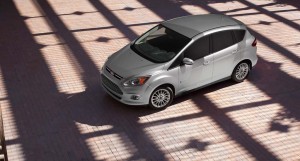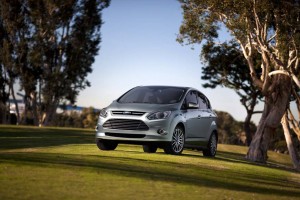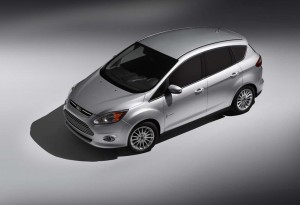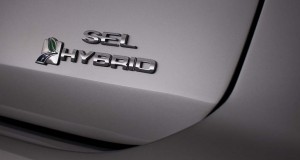With some experts now forecasting gas prices of $5 a gallon in the not-too-distant future, the spotlight is shining ever brighter on electric propulsion. But there’ll be a number of different “flavors” of battery power suggests Ford’s global product development chief, Derrick Kuzak.
The maker’s new C-Max microvan is a good example. The 7-passenger people mover will be offered with a variety of different propulsion systems including both a conventional hybrid drive and Ford’s first-ever plug-in hybrid system – both of which are making their debut at this year’s Detroit Auto Show.
 The standard hybrid will use Ford’s next-generation gasoline-electric drivetrain, lighter, smaller and more efficient than the one currently offered in such models as the Fusion Hybrid and Escape Hybrid. One reason is the switch from older nickel-metal hybrid technology to the newer lithium-ion batteries, which are themselves 25% smaller and 50% lighter.
The standard hybrid will use Ford’s next-generation gasoline-electric drivetrain, lighter, smaller and more efficient than the one currently offered in such models as the Fusion Hybrid and Escape Hybrid. One reason is the switch from older nickel-metal hybrid technology to the newer lithium-ion batteries, which are themselves 25% smaller and 50% lighter.
That should permit the C-Max Hybrid to match or even exceed the 41 mpg highway fuel economy of the current Fusion, despite the van’s larger mass and capacity, said Sherif Marakby, the director of Ford’s electrification program.
The new hybrid also will be able to get up to 47 mph operating solely on battery power using its pair of electric motors.
But the bigger news is arguably the launch of the new Ford C-Max Energi, the Detroit maker’s first plug-in hybrid. The system will use a so-called “Power Split Drive,” which will allow it to operate on pure battery power – even at highway speeds – then switch to a more conventional gasoline-electric mode, like the C-Max Hybrid, when the batteries run down.
Ford is declining to reveal specific details, such as the size of the C-Max Energi battery pack and the distance the plug-in can operate solely on battery power. But it’s expected the vehicle will have a somewhat smaller pack of lithium-ion batteries than the 16 kilowatt-hour pack used in the Chevrolet Volt. That plug-in gets anywhere from 25 to 50 miles per charge.
Ford does suggest that combining battery and gasoline power the C-Max Energi will get up to 500 miles without either recharging or refilling the fuel tank.
Marakby notes that Ford expects a shorter charge cycle than that of the Volt. But whether that’s due to the higher-power 220-volt charger Ford is introducing or because C-Max Energi has a smaller battery pack is unclear.
(Click Here for more on that new charger – which will be sold through the Best Buy chain – and Ford’s first pure-electric passenger car, the Ford Focus Electric.)

The C-Max Hybrid adopts a new gas-electric driveline, migrating from nickel-based to lithium-ion batteries.
“The goal is to ensure that the electric vehicle experience is as engaging, easy and empowering as a traditional car,” says Kuzak.
The new 2012 Ford C-Max Energi is one of five advanced battery-powered vehicles that the Detroit maker plans to introduce over the next couple years. That list also includes the Focus Electric and a battery-electric version of the Ford Transit Connect van.
Signficantly, Kuzak notes, the underlying technologies have been developed in a way that will allow them to migrate from model-to-model off any Ford global platform which means, for example, that the Energi’s plug-in system could be used in the Focus or even the Transit Connect, among other offerings.
And the technology could be adapted for other platforms, as well, he notes.
So, the likelihood is that there will be even more battery-based offerings coming from Ford in the relatively near future.
Indeed, Kuzak signals that by noting that the maker believes electric propulsion – including conventional hybrids, plug-ins and pure battery-electric vehicles – will make up anywhere from 10 to 25% of its global fleet by 2025.
That is, of course, a wide range, Kuzak concedes, and will depend on factors such as fuel prices, technical advances and potential support from governments around the world.



